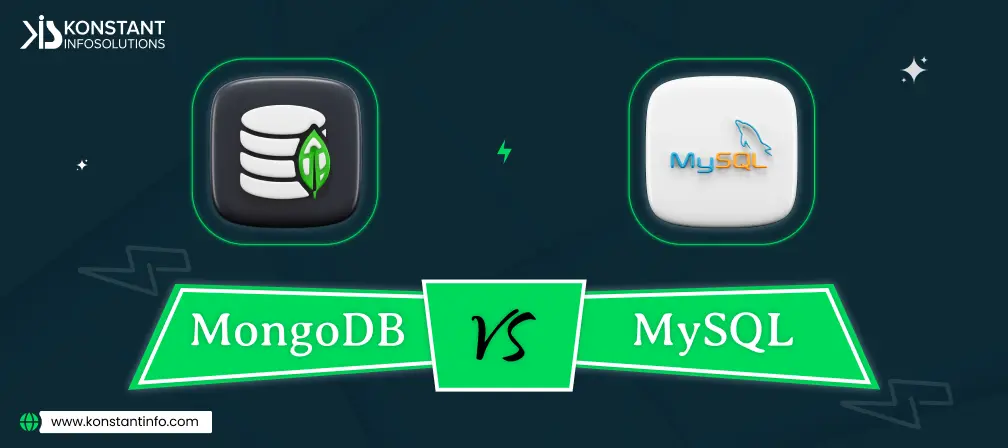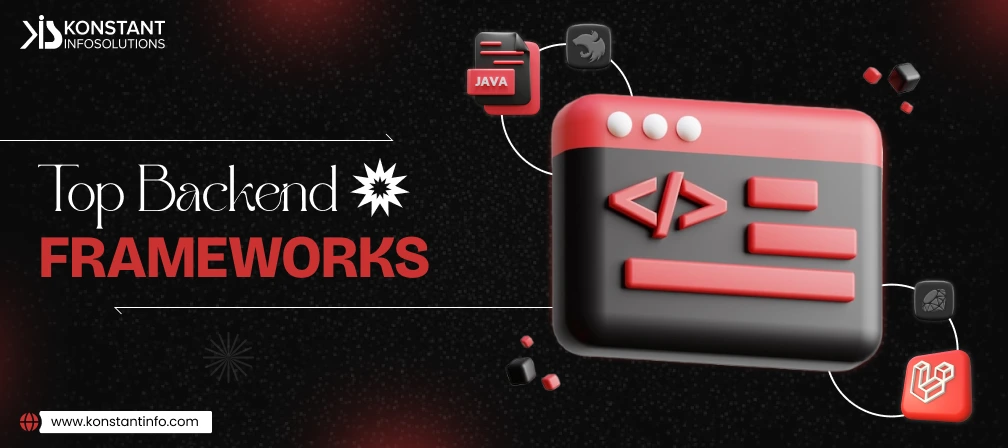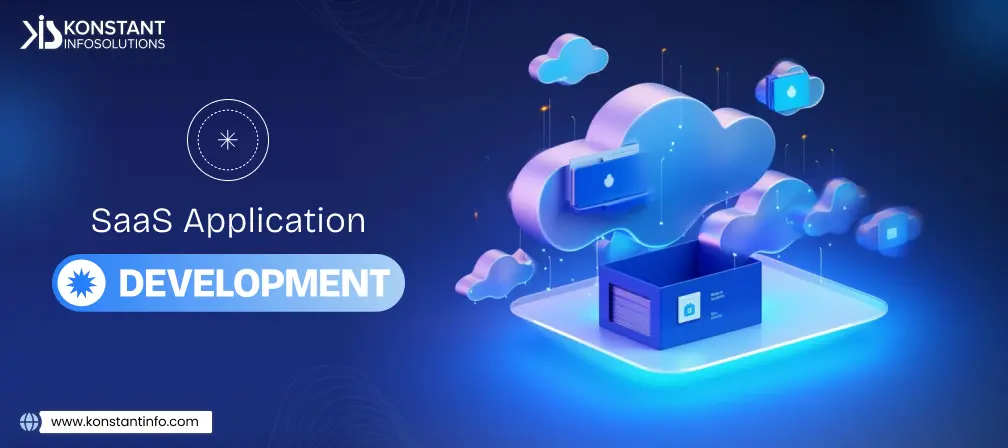
Table of Contents
Every business needs a well-designed database to manage the underlying functionality of their projects. Finding a well-organized, functional system allows the team to perform data-related tasks with ease which is eventually crucial to the success of the business.
There are numerous tools, databases, frameworks, programming languages, platforms, and operating systems to help the organization manage its data, and finding the right one can be a daunting task. Here is a comparative study on MongoDB vs. MySQL to ease out the research work a bit:
MySQL is a part of an open-source relational database management system (RDBMS). It’s used to store, manage, and retrieve data in structured formats using SQL (Structured Query Language). MySQL is developed and supported by Oracle.
There are many features that make MySQL great for Database management. Let us find about some of the main features of MySQL:
| Open-Source | It is a powerful open-source RDBMS. So, it can be used for modifying and distributing for free under the GNU General Public License. |
| Supports SQL | A mobile app development company uses Structured Query Language (SQL) to access and manage data in databases. |
| High performance and cross-platform support | It is perfect for developing website pages and services that need speed. It also supports building software that works on different devices and systems like Windows, macOS, Linux, and others. |
| Secure | One of the advantages that MySQL offers is strong security features, like user authentication, password encryption, SSL support, and data encryption to protect your sensitive data. |
| Scalable | It is suitable for both small and larger applications. |
| Flexible | It can easily be integrated with multiple programming languages like PHP, Python, Java, C++, Ruby, etc. |
| Active Community | MySQL enjoys an active community of support who are continuously contributing to its development and tools. You can easily access a set of tutorials, blogs on YouTube, and get professional support through Oracle. |
A database that is not stored and managed according to the traditional relational databases (like MySQL or PostgreSQL) known as a MongoDB or NoSQL database. It doesn’t use tables, rows, and columns. MongoDB stores data in easy, flexible, and JSON-like format called BSON (Binary JSON). It is well known for its scalability and flexibility.
The advanced feature if MongoDB that help it retail majority of the database managers. So, let’s look at some of main features of MongoDB, one of the most popular NoSQL databases:
| Document Oriented Storage | MongoDB stores data in BSON documents. Each document is a flexible, independent object like a JSON object. It makes it easy to structure complex data. |
| Flexible Schema | You don’t have to define a strict table structure. Each document in a collection can have a different model. |
| High Performance | MongoDB was eventually developed for optimizing fast read and write operations, mainly for large data sets. It uses indexes, in-memory storage, and efficient data access patterns. |
| Scalable | It handles large data volumes and high traffic. |
| Rich Query Language (MQL) | MongoDB offers a powerful and compatible query language that allows a mobile app development company to search, filter, and manipulate documents stored in a collection (similar in purpose to SQL, but designed for JSON-like document structures). |
| Indexing | It allows the creation of indexes on any field to speed up queries. It also supports compound, text, geospatial, and hashed indexes. |
| High Availability | Provides automatic failover and data redundancy. |
| Cross-Platform and Cloud Ready | MongoDB is designed to be highly portable and easy to deploy on different environments, making it both cross-platform and cloud-ready. MongoDB runs on almost all major operating systems, including: Window, Linux, MacOs, Containerized (Docker) |
MongoDB
MySQL
| MongoDB | MySQL |
| Known as a document-oriented database. | It’s a type of relational database management system. |
| Stores data in flexible, JSON-like documents. | Uses tables with rows. And columns to store data. |
| Scheme-less (flexible structure). | Schema-based (fixed structure). |
| Uses MQL. | Supports SQL. |
| Horizontally expandable. | Vertically extendable. |
| Useful for large, unstructured data. | Ideal for complex transactions and joins. |
| MongoDB | MongoDB is best suited for fast, scalable apps with large, changing, or unstructured data. |
| MySQL | On the other hand, MySQL is apt for complex, relational apps that mandate strong consistency and structured data. |
The process you use to structure and organize data in a database is concisely called a data model. The difference between MongoDB and MySQL in this aspect:
| MongoDB |
|
| MySQL |
|
| MongoDB provides a flexible approach to scaling. If your data grows or your application needs to deal with heavy traffic and requests, then undeniably, MongoDB is the best option. Because MongoDB helps perform through sharding, which distributes data across multiple machines. It also supports vertical scaling by increasing resources on a single server. |
| Use MySQL if you have a consistent data structure. It is generally scaled by adding more resources (CPU, RAM, and SSD) to a single server. |
| MongoDB | Strong point-in-time recovery and traditional RDBMS reliability. |
| MySQL | Easier cloud backup and recovery, great for modern apps. |
Both offer flexibility in different ways.
| MongoDB collections do not require a rigid schema to store documents with different fields and structures. You can store arrays and complex hierarchical data directly. The best thing, it supports sharding and distributing data, making it more flexible for scaling out large datasets. |
| MySQL is flexible in maintaining complex relationships and enforcing constraints between data tables. It has a strong ecosystem and tools for reporting, ETL, backups, and migration. |
Both are known for strengthening security.
| MongoDB | MongoDB requires careful configuration, especially if self-hosted. Powerful features like encryption, auditing are in the Enterprise or Atlas versions. |
| MySQL | It is more secure by default, with strong authentication, permissions, and encryption support (even in the community version). |
Below are the key use cases.
MongoDB is great for real-time, flexible, and rapidly changing mobile apps. Its flexible schema allows for easy building of data models post-launch. This way you can keep your app up to date with the growing demands. It commonly uses in chat apps, social media feeds, location-based services, and IoT applications.
In addition, MySQL is best for your app if you need strict data consistency, transactions, or relational data models. It highly uses in E-commerce apps, banking apps, and booking/reservation systems.tool
MySQL helps your app with data integrity, complex relationships, and ensuring reliable transactions.
MongoDB is recommended if your project is Content-focused, real-time, or unstructured and developed using Node.js, React.js, or other JavaScript.
Here are the following points that can give you an idea when to use these two powerful databases:
| Use MongoDB | Use MySQL |
| If schema changes often | For a fixed, structured schema |
| Ideal for developing real-time apps or content-driven apps | Perfect for transactional apps to ensure the integrity and security of the apps |
| If app is built with React.js, Node.js, or JavaScript Stack | For complex queries and SQL reporting |
| To speed up development | Use for strong data consistency |
Undoubtedly, MongoDB and SQL are both powerful databases, but careful consideration is important. If you are developing an app that needs flexibility, speed, and scalability based on demand. MongoDB is the best for the development of these types of apps.
But if you are projects require data integrity, relational logic, and SQL reporting. MySQL is the safer, more reliable option in that case.



Manish Jain is the co-founder and Managing Director at Konstant Infosolutions. He is responsible for the overall operations of the company and has played a major role in bringing Konstant up from its humble beginnings and, with his immense energy and drive, transforming it into a globally trusted name in IT solutions.
Or send us an email at: [email protected]